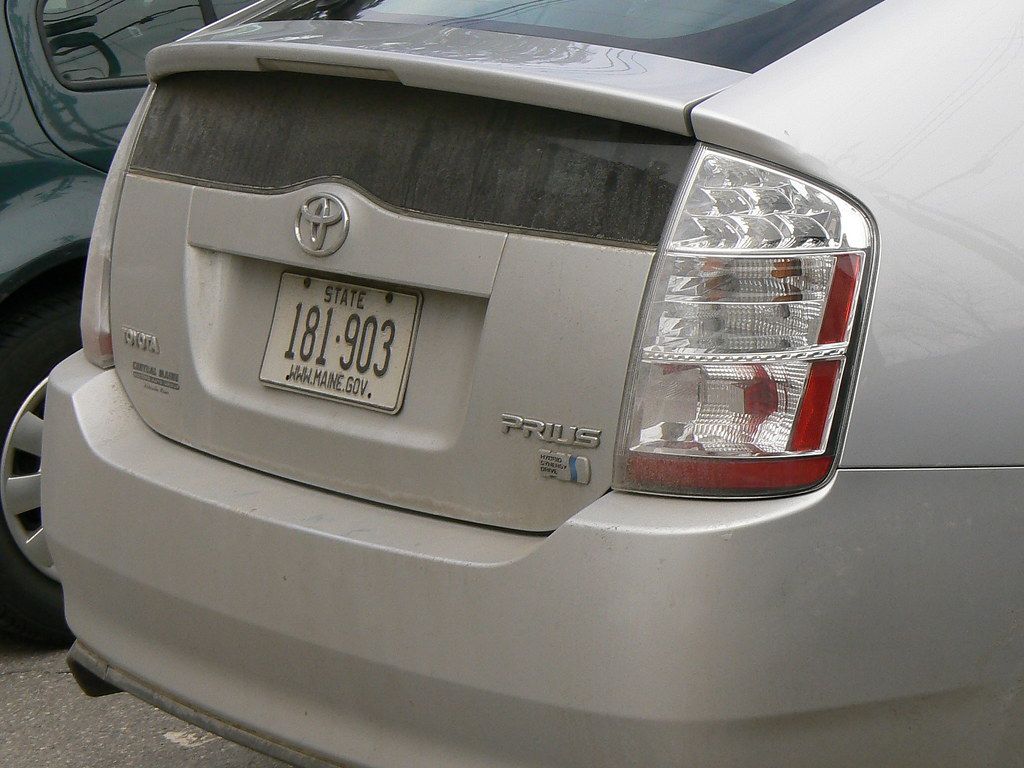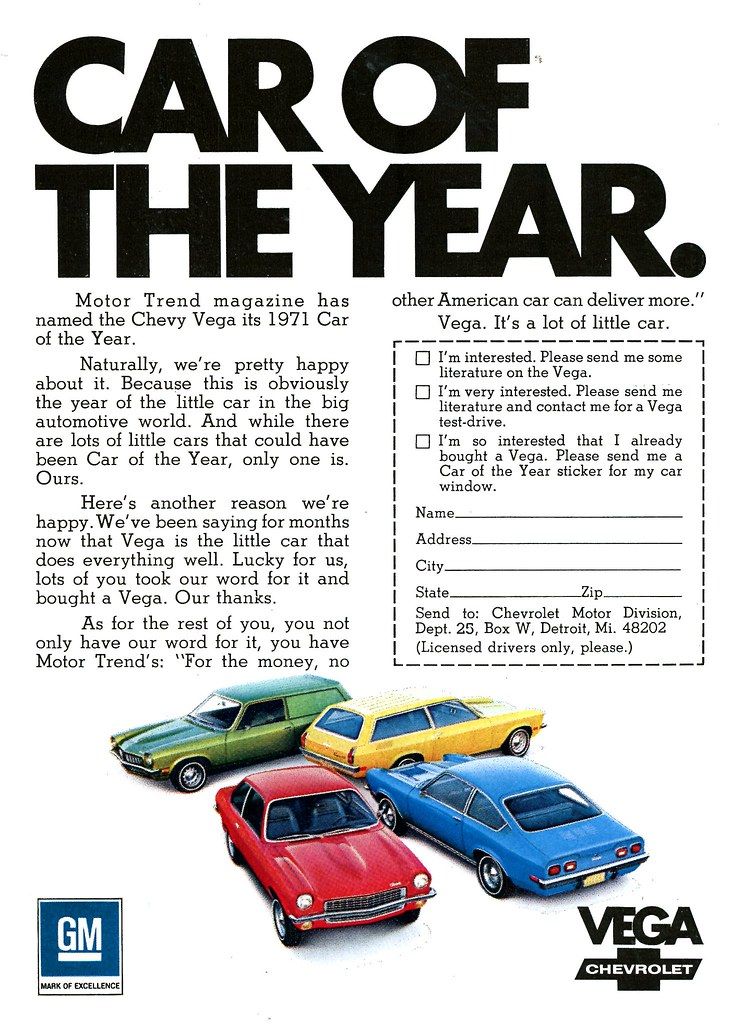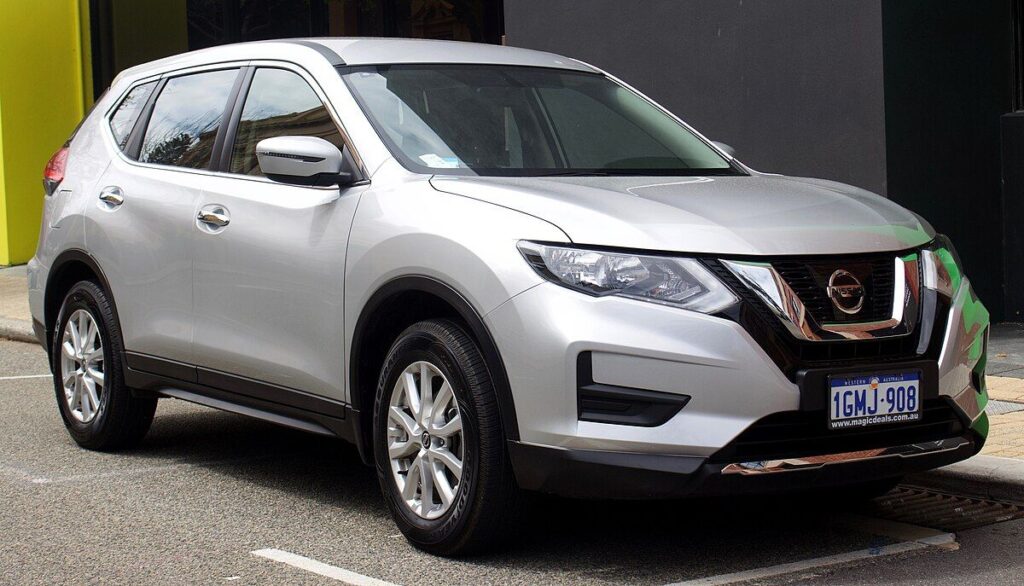
Compact SUVs have become ubiquitous for compelling reasons, striking a near-perfect balance between practical utility and manageable size. They are perfectly proportioned for family duties, agile enough for urban environments, and possess the flexibility to handle anything from extended road trips to daily school pickups or adventurous mountain escapes. For consumers seeking versatility without the bulk often associated with larger vehicles, this segment of the automotive market truly presents an array of intriguing and highly competitive options.
The 2025 lineup of compact crossovers stands out as more competitive than ever, elevating expectations with features once considered exclusive to higher segments. Hybrid powertrains, potent turbo engines, standard all-wheel drive, and increasingly luxurious interiors are now standard fare in a category that was once characterized by “just fine” family haulers. This comprehensive guide aims to dissect the top-performing, best-value, and most well-rounded compact SUVs currently available, ensuring you have all the necessary information to make an informed choice.
Whether your primary concern is maximizing miles per gallon, integrating the latest technology, or seeking genuine off-road capabilities, there is undoubtedly a suitable vehicle in this diverse and dynamic segment. We will delve into critical aspects such as passenger comfort, interior spaciousness, cargo capacity, and overall driving experience, providing an objective and data-driven comparison to help you identify the ideal compact SUV that seamlessly aligns with your specific needs and lifestyle.
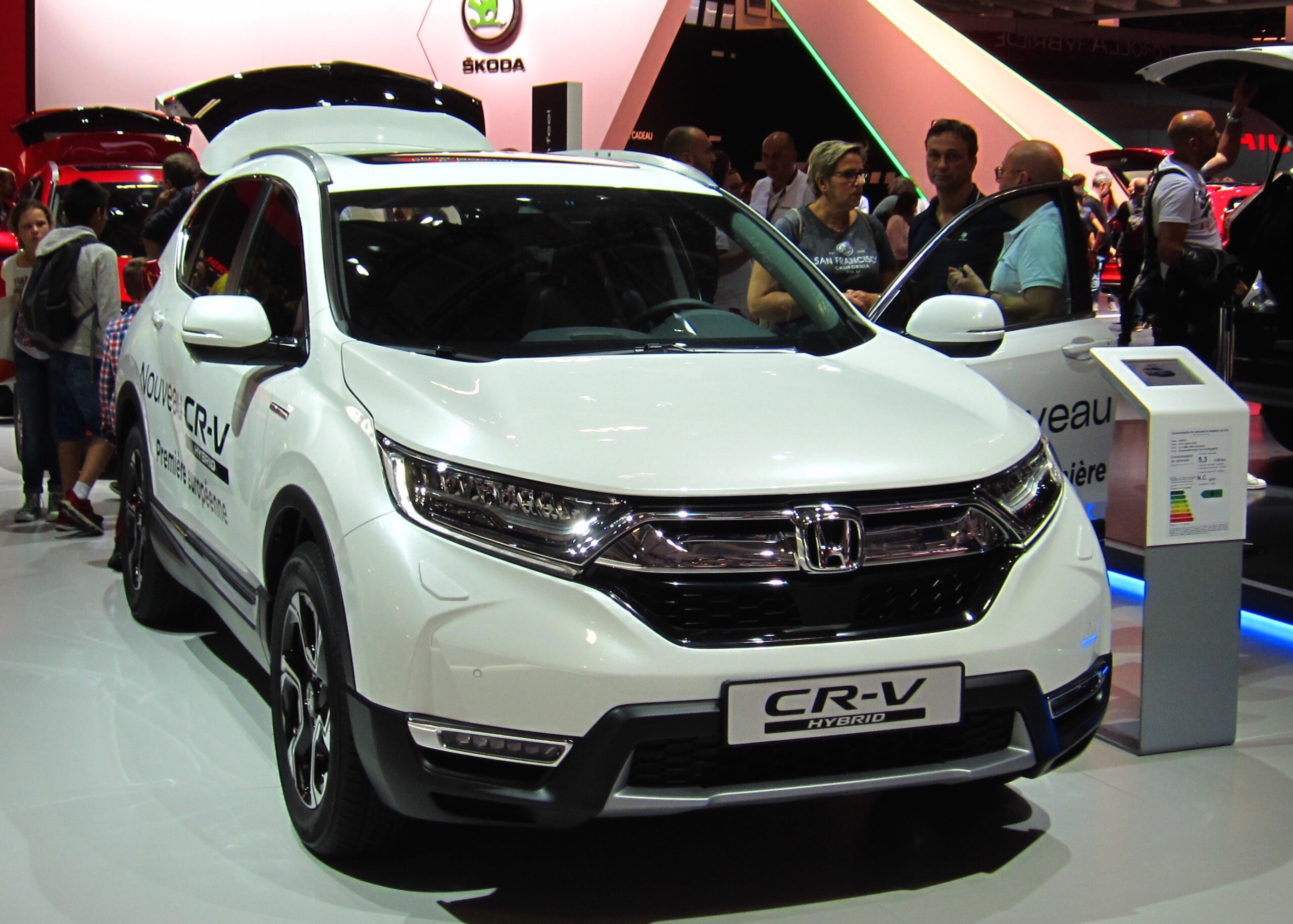
1. **2025 Honda CR-V**The Honda CR-V has long held its position as a go-to dependable family hauler, a legacy it continues to uphold with the 2025 model. Its design philosophy remains conservative, yet it is undeniably sharp and contemporary, appealing to a broad audience seeking understated elegance. Crucially, the CR-V maintains its reputation for offering top-tier interior space and exceptional comfort, benchmarks that few competitors can truly match.
Consumers looking at the 2025 CR-V are presented with two distinct powertrain choices, each catering to different priorities. The standard 1.5L turbo engine provides reliable performance for everyday driving, while an outstanding hybrid powertrain offers an impressive blend of daily drivability and substantial fuel savings. For those seeking a more engaging and responsive experience, the hybrid trims particularly shine, feeling noticeably more planted and responsive off the line, thanks to the integrated electric assist.
When it comes to interior accommodations, the CR-V truly excels, boasting some of the best space in its class. This is particularly evident in the rear seat legroom, which is remarkably generous, ensuring comfort for adult passengers or ample room for car seats without compromise. The focus on passenger well-being is clear, making long journeys considerably more pleasant for everyone aboard.
Beyond sheer volume, the CR-V’s ride quality is consistently smooth, absorbing road imperfections with ease, contributing to a refined driving experience. The steering is light and precise, making city maneuvers and parking remarkably easy. Furthermore, Honda has prioritized cabin serenity, with cabin noise being notably well-muted, creating a tranquil environment for occupants, whether commuting or embarking on a road trip. These elements combine to deliver a premium feel that belies its compact SUV classification.
Ultimately, if your desire is for a compact SUV that integrates effortlessly into your daily routine, providing reliable performance, outstanding comfort, and impressive efficiency without drawing undue attention, the 2025 Honda CR-V stands out as a premier choice. With a starting MSRP of $31,495, combined MPG reaching 30–40+ in hybrid configurations, and a generous cargo space of 39.2 cubic feet, it solidifies its position as a frontrunner for shoppers prioritizing space, comfort, and exceptional fuel economy.
Car Model Information: 2024 Honda CR-V EX AWD
Name: Honda CR-V
Caption: 2023 Honda CR-V e:HEV
Manufacturer: Honda
Aka: Honda Breeze (China, 2019–present)
Production: 1995–present
Class: Compact crossover SUV
BodyStyle: Sport utility vehicle
Layout: Front-engine, front-wheel-drive layout,Front-engine, four-wheel-drive layout
Chassis: Unibody
Predecessor: Honda Crossroad
Successor: Honda ZR-V
Categories: 2000s cars, 2010s cars, 2020s cars, All-wheel-drive vehicles, All Wikipedia articles written in British English
Summary: The Honda CR-V (also sold as the Honda Breeze in China since 2019) is a compact crossover SUV manufactured by Japanese automaker Honda since 1995. Initial models of the CR-V were built using the same platform as the Civic.
Honda began producing the CR-V in Japan and United Kingdom, for worldwide markets, adding North American manufacturing sites in the United States and Mexico in 2007, and Canada in 2012. The CR-V is also produced in Wuhan for the Chinese market by Dongfeng Honda, and also marketed as the Breeze in China for the version produced at Guangzhou by Guangqi Honda.
Honda states that “CR-V” stands for “Comfortable Runabout Vehicle,” while the term “Compact Recreational Vehicle” was used in a British car review article that was republished by Honda, associating the model name with the Sports Utility Vehicle abbreviation of SU-V.
As of 2022, the CR-V is positioned between the smaller ZR-V (marketed as HR-V in North America) — with which the CR-V shares a platform — and the larger North American market Passport/Pilot or the Chinese market Avancier/UR-V. It is currently Honda’s best-selling vehicle in the world, and the second best-selling SUV globally in 2020.
Get more information about: Honda CR-V
Buying a high-performing used car >>>
Brand: Honda Model: CR-V
Price: $28,562 Mileage: 33,628 mi.
Read more about: The 2025 Ford Escape: A Comprehensive Consumer Report on Value and Efficiency
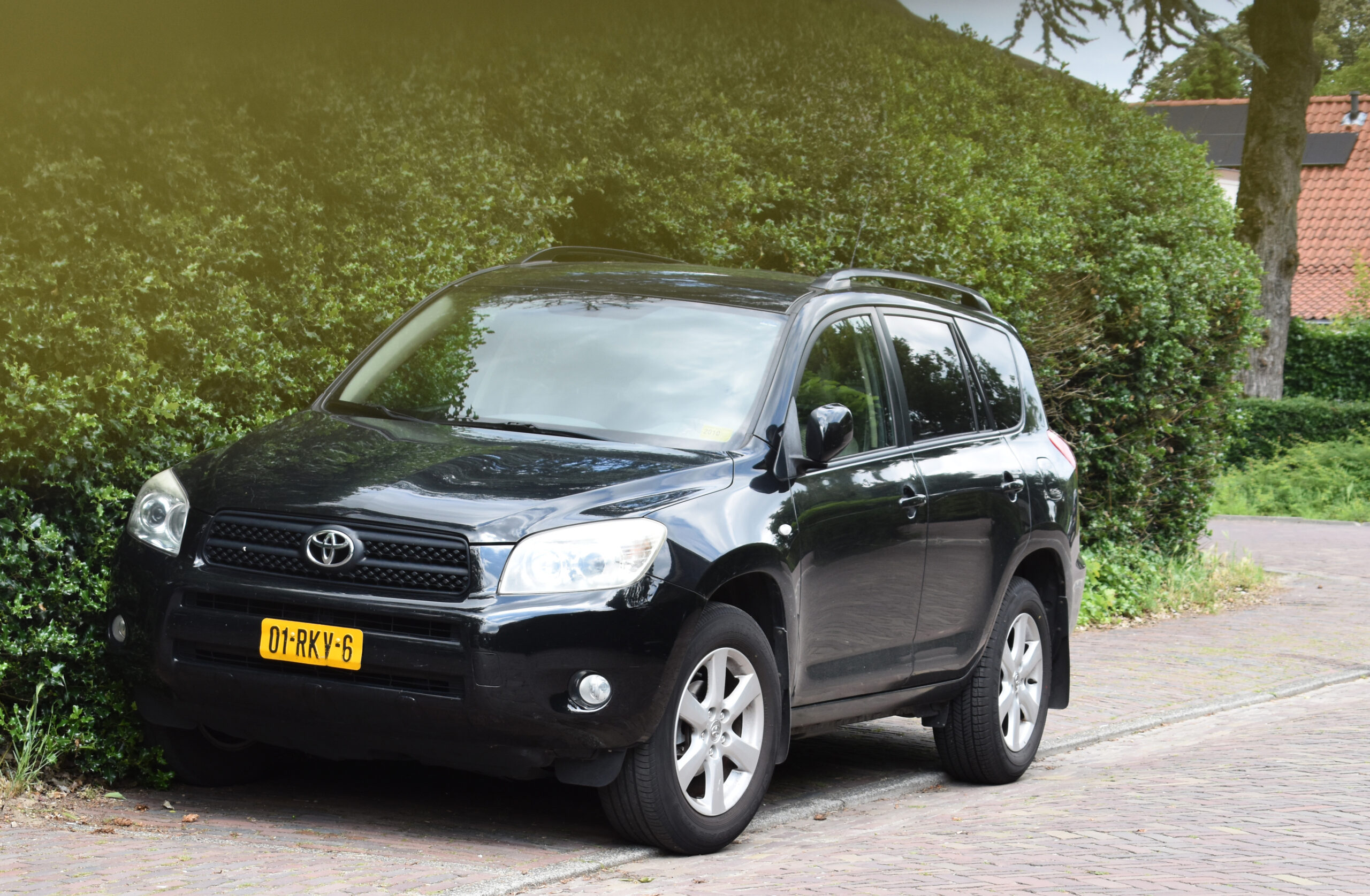
2. **2025 Toyota RAV4**The Toyota RAV4 continues its formidable presence at the top of sales charts, and this enduring popularity is certainly well-founded. The 2025 model year reinforces its appeal by offering an unparalleled breadth of variety, catering to a diverse array of consumer preferences. Shoppers can choose from traditional gasoline-powered models, highly efficient hybrids, advanced plug-in hybrids (known as the Prime), and even rugged, off-road-focused trims like the TRD Off-Road and Woodland Edition, ensuring there’s a RAV4 for almost every need.
Safety remains a cornerstone of the RAV4’s design, with Toyota Safety Sense coming standard across the lineup, providing a suite of advanced driver-assistance features for enhanced peace of mind. The RAV4 Hybrid, in particular, emerges as a standout, delivering an unbeatable blend of capability and efficiency that is hard to rival in the segment. It embodies practicality and robust build quality, all while possessing “just enough attitude to not feel bland,” striking a desirable balance between utility and character.
The efficiency and acceleration offered by both the hybrid and Prime variants are genuinely noteworthy, positioning them as significant highlights within their respective classes. Toyota has clearly focused on delivering a powertrain experience that is both responsive and remarkably economical. The interior design of the RAV4 is best described as functional, prioritizing usability without attempting to “over-impress,” a testament to its solid and dependable construction. This pragmatic approach translates into a cabin that is intuitive and straightforward.
Practicality extends deeply into the RAV4’s cargo area, which is specifically designed to be wide and flat. This configuration makes it exceptionally easy to load various items, from bulky gear for weekend adventures to everyday essentials like strollers and groceries. While the ride quality can be “a little firm on rough pavement,” a minor trade-off for its robust nature, the sheer volume of options available within the RAV4 lineup means it offers more choices than virtually any other competitor in the compact SUV segment.
For consumers who value a comprehensive array of choices in powertrain, styling, and capability, the 2025 Toyota RAV4 is an undeniable contender. Its starting MSRP of $30,645, combined MPG ranging from 30–40+ for hybrid/PHEV models, and a substantial cargo space of 37.6 cubic feet underscore its versatility and impressive fuel economy, making it a powerful option for a wide spectrum of buyers.
Read more about: The 2025 Ford Escape: A Comprehensive Consumer Report on Value and Efficiency
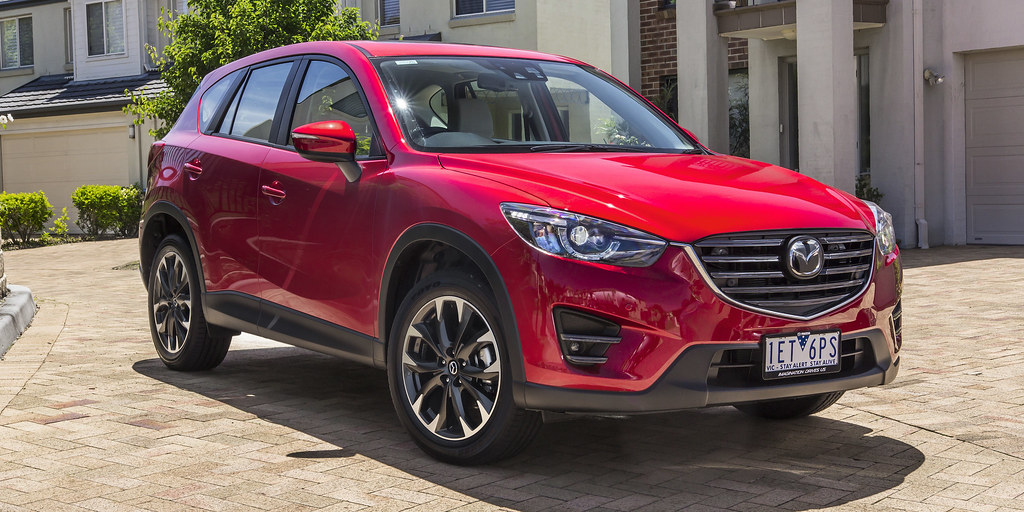
3. **2025 Mazda CX-5**For those who view driving as more than just a means of transportation, the 2025 Mazda CX-5 presents a compelling proposition: a compact SUV that genuinely feels like a driver’s car. It continues to set the benchmark in its class for handling feel, steering sharpness, and overall chassis tuning, characteristics that are more commonly associated with sport sedans. Even the base models deliver a driving experience that surpasses some competitors’ top-tier trims, a testament to Mazda’s unwavering commitment to dynamic performance.
Adding to its allure, the CX-5 boasts an exterior aesthetic that appears significantly more premium than its price point would suggest. This sophisticated visual appeal is further reinforced within the cabin, where the interior delivers a remarkably quiet environment and features an abundance of soft-touch materials. These elements combine to create an atmosphere that feels decidedly upscale, firmly backing up its premium exterior presentation and enhancing the overall occupant experience.
Under the hood, an available turbo engine truly brings the CX-5 to life, delivering a punchy performance with up to 256 horsepower, offering brisk acceleration and confident merging capabilities. Despite its spirited nature, the ride remains composed without ever feeling harsh, expertly blending comfort with engagement. Cornering in the CX-5 is genuinely fun, inspiring confidence and a sense of connection to the road that is rare in this segment, making every drive an enjoyable event.
However, in the spirit of objective analysis, it’s important to note that the CX-5 does come with a couple of practical compromises. The rear seat and cargo space, while adequate for many, are indeed tighter compared to some of its more voluminous rivals. This necessitates a more strategic approach to packing for families or individuals who frequently transport large items. Additionally, the infotainment system stands out as a weak link, particularly its reliance on a console-mounted knob rather than a touchscreen when the vehicle is in motion, which can be less intuitive for some drivers.
Despite these minor drawbacks, the 2025 Mazda CX-5 firmly distinguishes itself as the ideal choice for those who prioritize an engaging driving experience and a premium interior feel over maximum cargo volume. With a starting MSRP of $30,190, combined MPG ranging from 24–28, and a cargo space of 30.9 cubic feet, it continues to lead the class in handling and interior quality, appealing to discerning drivers who appreciate its unique blend of sportiness and sophistication.
Continuing our deep dive into the 2025 compact SUV market, we now turn our attention to four more compelling contenders. These vehicles each bring their own distinct advantages in terms of technology, design, utility, and driving experience, rounding out our comprehensive comparison to help you find the perfect match for your lifestyle.
Car Model Information: 2017 Mazda CX-5 Touring
Name: Mazda CX-5
Caption: Second generation CX-5 (KF; 2024)
Manufacturer: Mazda
Production: 2012–present
ModelYears: 2013–present
Class: Compact crossover SUV
BodyStyle: SUV
Layout: unbulleted list
Predecessor: unbulleted list
Categories: 2020s cars, All-wheel-drive vehicles, All articles containing potentially dated statements, All articles lacking reliable references, All articles with dead external links
Summary: The Mazda CX-5 is a compact crossover SUV, produced by Mazda since 2012. A successor to both the Tribute and the slightly larger CX-7, it is Mazda’s first model to feature the “Kodo” design language and the first model to be fully developed with a range of technologies branded as Skyactiv, including a rigid, lightweight platform combined with a series of engines and transmissions to reduce emissions and fuel consumption. The car was first revealed in 2011.
Since 2019, the CX-5 is positioned above the smaller CX-30. As of 2022, depending on the region, the CX-5 is positioned right below the larger CX-50, CX-60 or the CX-8 within Mazda’s crossover SUV line-up.
Since 2014, the CX-5 has consistently been Mazda’s best-selling model globally. It achieved record sales in 2019, with 444,262 units sold worldwide. As of March 2022, cumulative sales of the CX-5 reached around 3.5 million units.
Get more information about: Mazda CX-5
Buying a high-performing used car >>>
Brand: Mazda Model: CX-5
Price: $17,058 Mileage: 66,173 mi.
Read more about: The 2025 Ford Escape: A Comprehensive Consumer Report on Value and Efficiency
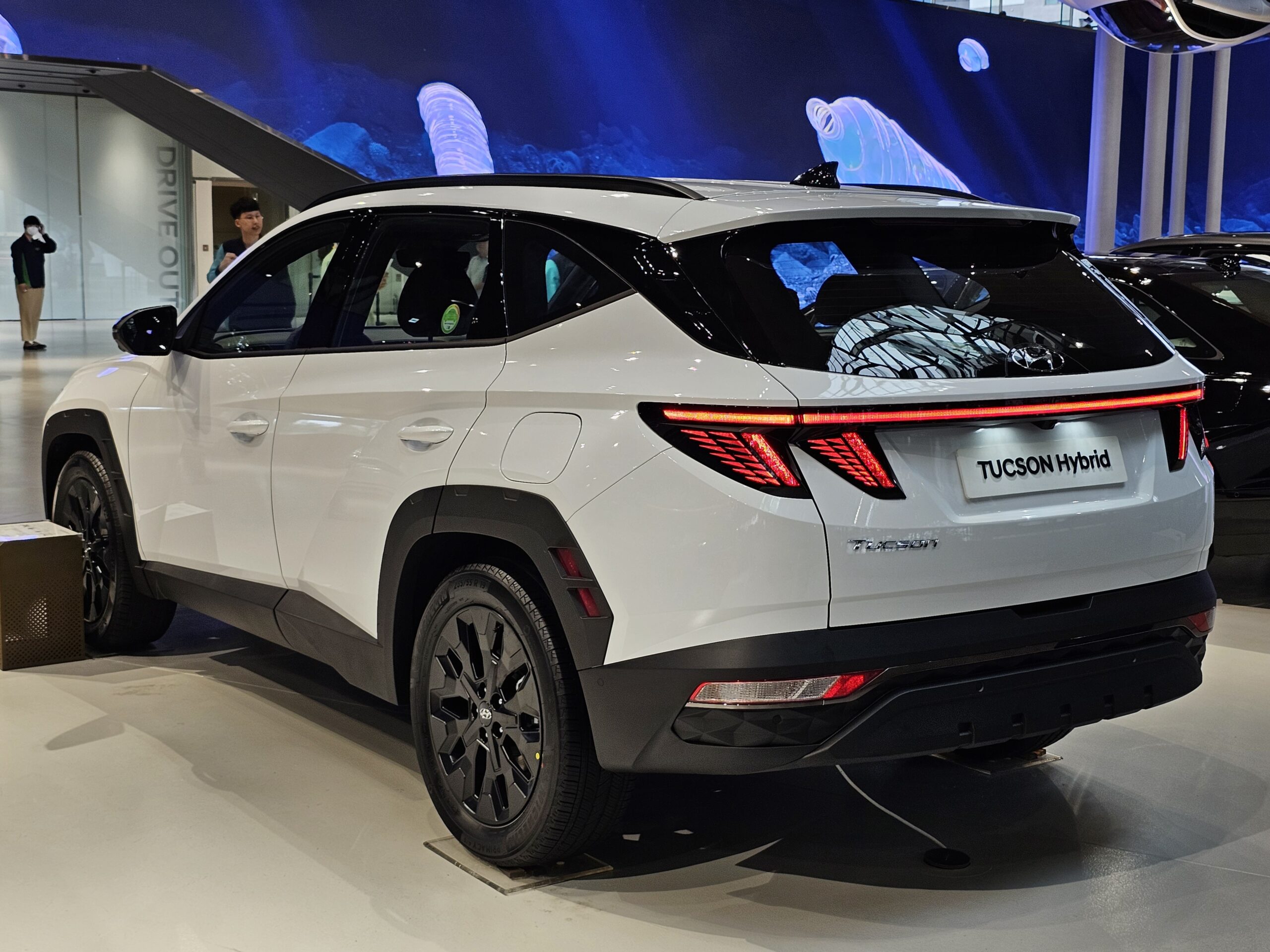
4. **2025 Hyundai Tucson**Hyundai’s aggressive redesign of the Tucson was a bold move, and it has undeniably paid off. The 2025 model retains its striking, concept-car aesthetic, characterized by sharp angular lines and a meticulously streamlined cabin layout. This distinctive styling ensures the Tucson stands out in a crowded segment, appealing to those who desire a vehicle with a modern and adventurous visual presence.
Consumers interested in the Tucson have a comprehensive range of powertrain options at their disposal, including a traditional gas-only engine, a highly efficient hybrid, and a capable plug-in hybrid (PHEV) variant. Regardless of the chosen configuration, the Tucson comes generously equipped with advanced technology. This includes the availability of dual 10.25-inch screens for an immersive digital experience and a convenient digital key system that can be shared directly from a smartphone.
The driving experience in the Tucson is notably smooth, contributing to a comfortable ride for all occupants. For those opting for the hybrid trims, there is an additional benefit of feeling remarkably peppy around town, making daily commutes more enjoyable. Furthermore, Hyundai has made significant strides in interior quality, with materials that feel decidedly upscale, particularly in the SEL and Limited trim levels, enhancing the overall cabin ambiance.
Practicality is another area where the Tucson truly excels. It offers an impressive amount of cargo space, accommodating a wide range of gear, groceries, or luggage with ease. Moreover, its second-row legroom is considered best-in-class, ensuring adult passengers or children in car seats have ample space. Adding to its appeal, Hyundai’s industry-leading warranty, offering 10 years or 100,000 miles on the powertrain, provides exceptional long-term peace of mind for owners. With a starting MSRP of $30,155, combined MPG ranging from 28–38 (Hybrid/PHEV), and a substantial cargo space of 38.7 cubic feet, the Tucson is a compelling choice for its technology, styling, and robust warranty.
Car Model Information: 2020 Hyundai TUCSON Limited
Name: Hyundai Tucson
Caption: Hyundai Tucson (NX4, SWB)
Manufacturer: Hyundai Motor Company
Aka: Hyundai ix35 (2009–2015)
Production: 2004–present
ModelYears: 2005–present
Class: Compact crossover SUV
BodyStyle: sport utility vehicle
Layout: Front-engine, front-wheel-drive layout,Front-engine, four-wheel-drive layout
Sp: us
Categories: 2010s cars, All-wheel-drive vehicles, All Wikipedia articles written in British English, All articles needing additional references, All articles with dead external links
Summary: The Hyundai Tucson (; Korean: 현대 투싼) is a compact crossover SUV produced by the South Korean manufacturer Hyundai. It is named after the city of Tucson, Arizona, U.S.
The second-generation model was marketed as the Hyundai ix35 in several markets, including Europe, Australia and China, before reverting to Tucson for the third-generation. Since its first-generation, the Tucson has been developed alongside the Kia Sportage, sharing platforms and engines.
The Tucson is the best-selling Hyundai model, with more than 7 million units sold globally since it launched in 2004. Of these, 1.4 million units have been sold in Europe.
Get more information about: Hyundai Tucson
Buying a high-performing used car >>>
Brand: Hyundai Model: Tucson
Price: $20,961 Mileage: 14,867 mi.
Read more about: The Ultimate 2025 SUV Fuel Economy Showdown: How Top Models Perform on Long-Distance Journeys
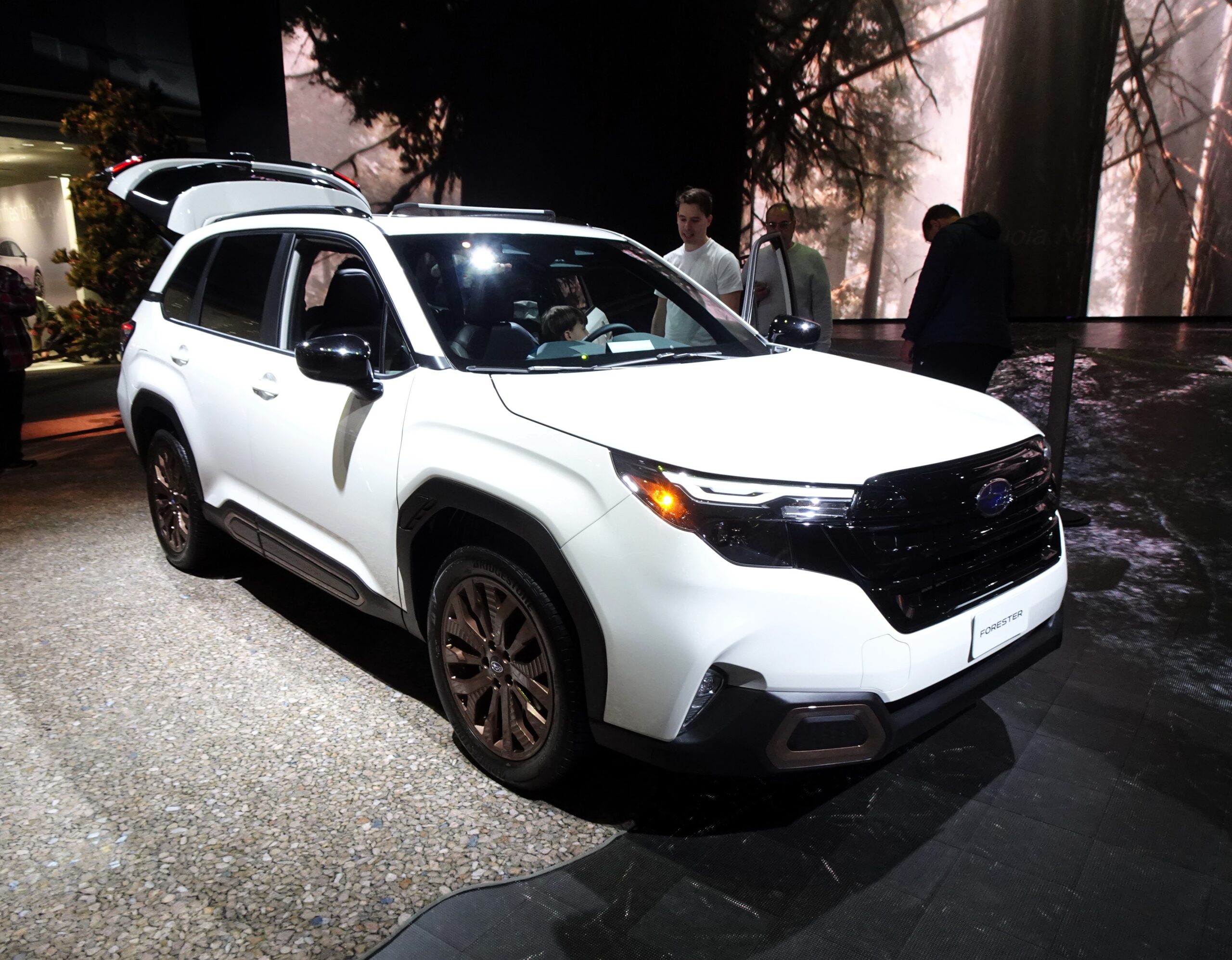
5. **2025 Subaru Forester**The Subaru Forester carved out its niche by playing a distinctly different game, prioritizing rugged utility and practicality over flashy aesthetics. It is purposefully engineered for drivers who regularly encounter challenging weather conditions, require ample cargo space, and value exceptional visibility from the driver’s seat. True to its heritage, Subaru continues to include all-wheel drive (AWD) as standard across the entire Forester lineup, a significant advantage that many competitors still charge extra for.
Beyond its standard AWD, the Forester is renowned for its robust safety scores and comprehensive suite of driver assistance technologies, offering an elevated sense of security. Its iconic boxy shape is not merely for aesthetics; it is a functional design choice that significantly simplifies the loading of various types of cargo, from camping gear to large shopping hauls. This design, combined with excellent ground clearance, also provides genuine off-pavement capability, making it a reliable companion for adventurous excursions.
The interior of the Forester, while not designed to be overtly flashy, is exceptionally practical and built for durability, ready to withstand the rigors of an active lifestyle. Its updated Starlink infotainment system is lauded for its ease of use, ensuring that drivers can intuitively access navigation and entertainment features. This focus on straightforward functionality underlines the Forester’s commitment to providing a dependable and user-friendly experience.
While the power delivered by the flat-four engine is adequate for most daily driving scenarios and light off-roading, it is important to manage expectations; the Forester is not engineered for thrilling acceleration. However, its unwavering commitment to all-weather utility, superior cargo room, and consistent safety performance solidifies its appeal. With a starting MSRP of $31,415, a combined MPG of 29, and a generous cargo space of 35.4 cubic feet, the Forester remains the steadfast choice for those prioritizing reliability and all-terrain readiness.
Read more about: Winter-Ready and Wallet-Friendly: Discover the Best 2025 Cars for Low-Cost Maintenance and Superior Snow Performance
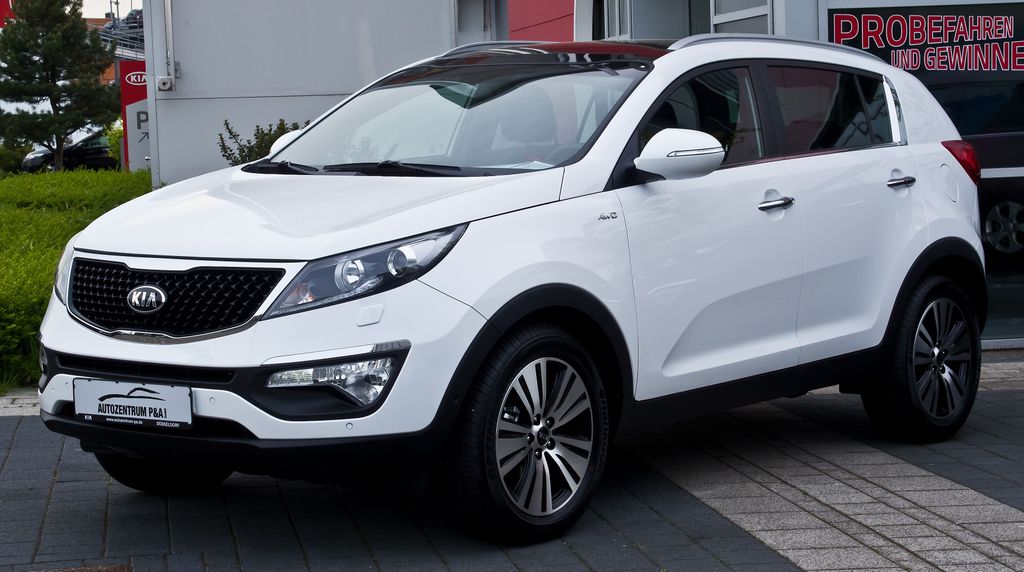
6. **2025 Kia Sportage**Kia has consistently taken bold design and engineering swings in recent years, and the 2025 Sportage stands as one of its most successful hits. It masterfully blends stylish aesthetics, an accessible price point, and a wealth of integrated technology. Inside, the cabin immediately impresses with its curved panoramic display, a feature that imparts a sense of luxury more typically found in premium brands rather than a budget-minded compact SUV.
The Sportage provides consumers with a diverse selection of powertrains, including a standard gasoline engine, an efficient hybrid, and a practical plug-in hybrid option. This strategic offering positions it as a direct and formidable rival to popular models like the Toyota RAV4 and Hyundai Tucson, all while maintaining a price point that is exceptionally difficult for competitors to beat, enhancing its value proposition significantly.
One of the Sportage’s most compelling practical advantages lies in its massive second-row space, ensuring that passengers enjoy generous legroom and comfort on any journey. This is complemented by an equally huge cargo area, making it an excellent choice for families or individuals with substantial hauling needs. Furthermore, its infotainment system is consistently praised as one of the best in its class, offering intuitive operation and seamless connectivity. For those choosing the hybrid trims, the experience is enhanced by a quiet cabin and quick acceleration off the line.
Ultimately, if your aim is to secure a compact SUV that delivers on premium aesthetics and robust daily driver practicality without breaking the bank, the 2025 Kia Sportage delivers outstanding value. With a starting MSRP of $28,785, combined MPG ranging from 28–43 (Hybrid), and an impressive cargo space of 39.6 cubic feet, it stands out for its cutting-edge cabin technology and expansive passenger and cargo room.
Read more about: The Ultimate 2025 SUV Fuel Economy Showdown: How Top Models Perform on Long-Distance Journeys
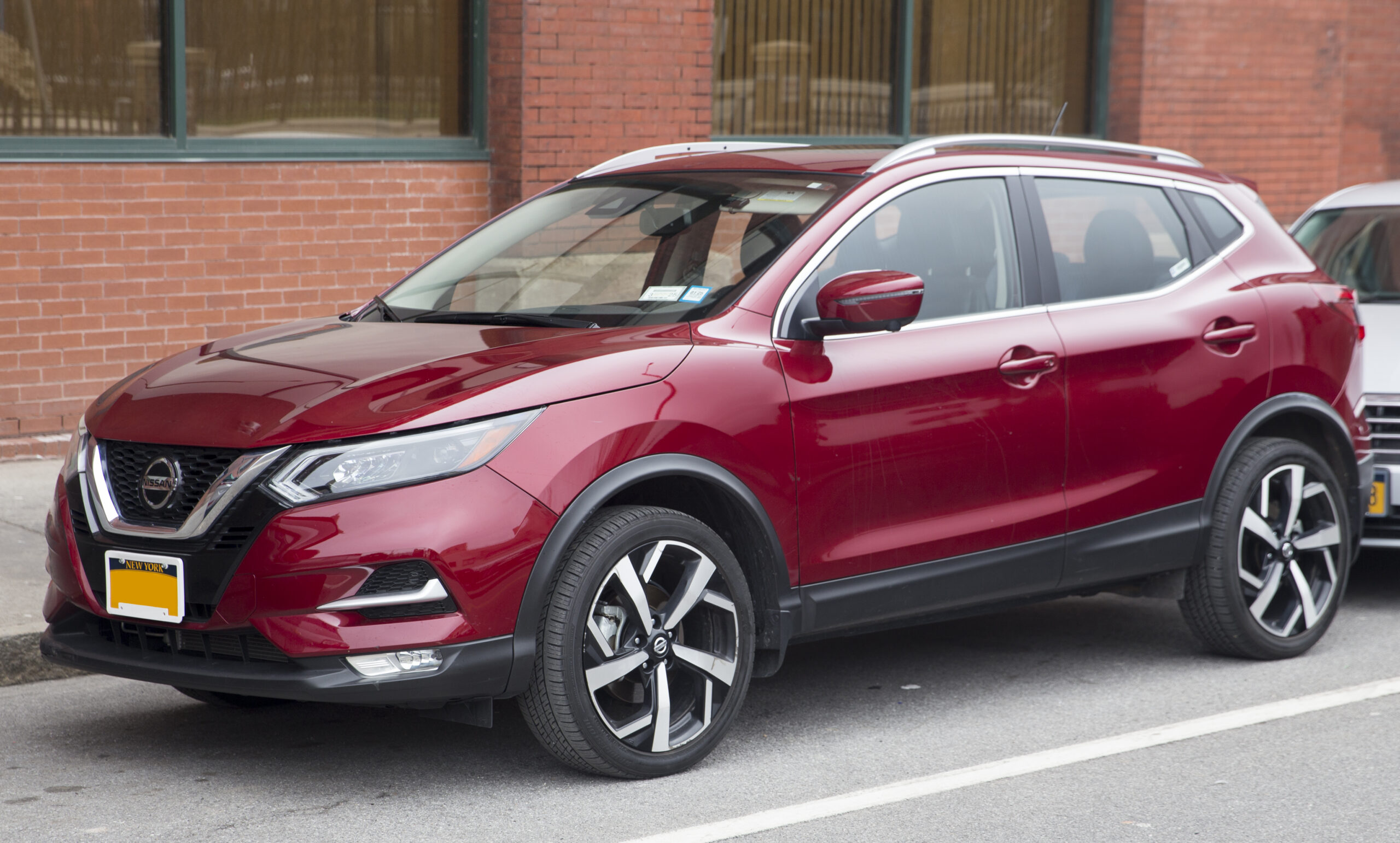
7. **2025 Nissan Rogue**The Nissan Rogue has, somewhat subtly, evolved into one of the most refined and sophisticated crossovers in the entire compact SUV class. Its driving experience is characterized by exceptional smoothness and remarkable quietness, setting it apart from many competitors. The 2025 model is now powered by an innovative 1.5L variable-compression turbo engine, which adeptly balances solid fuel efficiency with a respectable amount of power for confident acceleration.
Nissan has made considerable advancements in the Rogue’s interior quality, noticeably elevating the cabin experience. This enhancement is particularly evident in the Platinum trim, where luxurious quilted leather upholstery and a convenient head-up display contribute to a genuinely premium ambiance. These thoughtful touches create an environment that feels considerably more upscale than its price segment might suggest, delighting occupants with comfort and sophistication.
Further enhancing the driving experience, the Rogue comes equipped with Nissan’s ProPILOT Assist system. This advanced feature offers both lane centering and adaptive cruise control that performs with impressive reliability and precision, significantly reducing driver fatigue on longer journeys. The interior is also designed to be wide and comfortable, complemented by a plethora of thoughtful storage solutions that cater to the practical needs of daily life.
While the 1.5L turbo engine prioritizes efficiency and a quiet operation, it is important to note that it doesn’t aim to deliver a particularly sporty feel. Instead, it focuses on providing a composed and economical ride. The 2025 Nissan Rogue is an excellent choice for consumers who place a high premium on comfort, refined ride quality, and advanced, user-friendly driver assistance technologies. With a starting MSRP of $30,225, a combined MPG of 33, and a cargo space of 36.5 cubic feet, it excels in ride quality and its suite of driver assistance features.
### Choosing the Right Compact SUV for Your Needs
This comprehensive guide wouldn’t be complete without helping you define your own priorities when selecting a 2025 compact SUV. Understanding what truly matters to you – be it passenger comfort, cargo space, fuel economy, safety, or technology – is crucial for narrowing down the myriad of options and ensuring you make a choice that perfectly aligns with your lifestyle.
#### Passenger Capacity and Comfort
When assessing potential vehicles, objectively consider how many individuals you transport on a regular basis. While most compact SUVs are designed to comfortably seat five occupants, it’s worth noting that some models offer optional third-row seating. However, this often comes with a trade-off, typically compromising the available cargo space, so it’s essential to evaluate this balance based on your specific needs.
An essential step in this evaluation is to personally assess the legroom, headroom, and overall seat comfort for all potential passengers. A thorough test drive with your family or typical passengers is indispensable to ensure everyone can travel comfortably, especially on longer journeys. Pay attention to backseat legroom for adults or car seats, ample headroom for taller individuals, and the quality and adjustability of seat materials.
#### Cargo Space and Practicality
Your unique cargo needs should heavily influence your decision. Think about the items you frequently transport – whether it’s weekly groceries, sports equipment for weekend activities, luggage for vacations, or even pet carriers. While compact SUVs generally offer a respectable amount of cargo space, this capacity can vary quite significantly between different models in the segment.
To make an informed choice, always check the manufacturer’s specifications for cargo volume, both with the rear seats in their upright position and when they are folded down. The availability of fold-flat rear seats can substantially increase usable cargo capacity, transforming the vehicle’s utility. Also, consider the convenience of smaller storage compartments for personal items, which can greatly enhance daily practicality.
#### Fuel Efficiency and Environmental Impact
For many purchasers, fuel efficiency is a paramount consideration, especially with fluctuating fuel prices. Compact SUVs aim to strike an appealing balance between interior space and economic fuel consumption, though specific figures will naturally differ based on the chosen model and its particular engine configuration. Hybrid and plug-in hybrid options are increasingly popular for those prioritizing significant fuel savings and a reduced environmental footprint.
Opting for a hybrid variant can lead to a substantial improvement in fuel efficiency, particularly beneficial in city driving conditions. It is always wise to consult the EPA estimated MPG ratings for any vehicle you are considering, as these provide a reliable benchmark for comparison. Additionally, remember that your personal driving habits, such as aggressive acceleration or frequent heavy braking, will also play a notable role in the vehicle’s real-world fuel consumption.
#### Safety Features and Technology
In contemporary vehicles, safety and advanced technology are not merely desirable additions but essential components. This segment of our guide focuses on the critical safety features and technological innovations integrated into the best 2025 compact SUVs, ensuring both a secure and supremely convenient driving experience. Modern compact SUVs are equipped with an impressive array of advanced driver-assistance systems (ADAS) meticulously designed to augment safety and provide crucial driver support.
These ADAS features typically include sophisticated systems such as adaptive cruise control (ACC), which intelligently maintains a preset distance from the vehicle ahead by automatically adjusting speed. Automatic emergency braking (AEB) provides a vital layer of protection by automatically engaging the brakes to either prevent or mitigate potential collisions. Lane departure warning (LDW) actively alerts the driver if the vehicle begins to drift unintentionally out of its lane. Other important features include blind-spot monitoring (BSM) and rear cross-traffic alert (RC-TA), which enhance situational awareness. The exact availability and advanced nature of these features will naturally vary depending on the chosen model and trim level.
Beyond safety, the infotainment system is central to the overall driving experience, transforming how you interact with your vehicle. Buyers should seek out intuitive touchscreen interfaces that are responsive and easy to navigate. Seamless smartphone integration through Apple CarPlay and Android Auto is almost a prerequisite for modern connectivity, allowing for effortless access to apps, messaging, and media. An integrated navigation system can also simplify route planning, while premium sound systems can elevate the in-cabin entertainment. A user-friendly and feature-rich interface is ultimately essential for an enjoyable and connected journey.
### Real-Life Case Studies and Scenarios
To help solidify the decision-making process, let’s consider a few real-life scenarios. These examples vividly illustrate how diverse buyers prioritized specific aspects of a 2025 compact SUV based on their unique individual needs and active lifestyles. Understanding these case studies can provide valuable insight, helping you to pinpoint which factors might be most crucial for your own particular circumstances.
The Miller family, comprised of two young children and a vibrant, active lifestyle, placed paramount importance on maximizing cargo space and achieving excellent fuel efficiency. After careful consideration, they confidently chose the Toyota RAV4 Hybrid. Its generously spacious cargo area, combined with outstanding fuel economy and a comprehensive suite of advanced safety features, proved to be indispensable for their frequent family outings and adventurous weekend getaways, perfectly meeting their dynamic requirements.
Conversely, Sarah, a dynamic young professional residing in a bustling urban environment, had a different set of priorities. Her primary concerns were superior fuel efficiency, cutting-edge technology features, and a compact size that would facilitate easy parking in congested city streets. Sarah ultimately selected the Mazda CX-5. She was particularly drawn to its sleek and sophisticated design, its impressive fuel economy for daily commuting, and its advanced driver-assistance systems, which provided both convenience and peace of mind in urban traffic.
When you find yourself deliberating between two strong contenders, a structured approach can be invaluable. First, clearly articulate your essential needs and priorities, such as fuel efficiency, cargo space, or specific safety features. Next, directly compare the specifications and features of your top two or three models that meet these initial requirements. Critically, take thorough test drives of each of your top choices; this hands-on experience is vital for evaluating driving dynamics, overall comfort, and how the vehicle truly feels. Finally, consult independent online reviews and expert ratings to gain a broader perspective and then, with all this information, weigh the pros and cons against your budget to make your most informed decision.
### Debunking Common Myths about Compact SUVs
Despite their widespread popularity, compact SUVs are often subject to various misconceptions. It’s important to address these common myths with factual, objective information to ensure that potential buyers are making decisions based on accurate understanding rather than outdated or incorrect beliefs.
One prevalent misconception is that compact SUVs inherently offer less safety compared to their larger vehicle counterparts. This is categorically untrue. Modern compact SUVs are meticulously engineered with robust structural designs and integrate an impressive array of advanced safety features. These include sophisticated driver-assistance systems, often making them just as safe, and in many instances even safer, than some older, larger vehicles, thanks to continuous advancements in automotive safety technology.
Another frequent myth is that all compact SUVs suffer from poor fuel economy. This notion is outdated and inaccurate, especially given the rapid advancements in automotive engineering. With the widespread introduction of highly efficient engine options, including hybrid and plug-in hybrid (PHEV) powertrains across various models, many compact SUVs now deliver excellent gas mileage. This is particularly noticeable in city driving conditions where hybrid systems can significantly reduce fuel consumption, proving that space and efficiency are no longer mutually exclusive.
Finally, the idea that compact SUVs are too small to adequately accommodate families is a common oversimplification. While it is true that their interior space is naturally more contained than in full-size SUVs, many compact SUVs provide ample passenger and cargo room that is perfectly sufficient for smaller families. Moreover, several models even offer optional third-row seating, albeit often with a tighter configuration, providing additional flexibility for occasional extra passengers without requiring a jump to a larger, more cumbersome vehicle.
### Frequently Asked Questions (FAQ)
To further assist you in your compact SUV buying journey, we’ve compiled answers to some of the most frequently asked questions.
**What is the average price range for a 2025 compact SUV?**
The average price range for a 2025 compact SUV typically falls between $25,000 and $40,000. It is crucial to remember that this range can vary significantly based on the specific brand, model, chosen trim level, and any additional optional features you select, so always check pricing for your desired configuration.
**Which 2025 compact SUVs offer the best fuel economy?**
For consumers prioritizing fuel efficiency, hybrid versions of numerous compact SUVs consistently deliver the best fuel economy figures. Models such as the Toyota RAV4 Hybrid and the Honda CR-V Hybrid are particularly renowned for their impressive efficiency and frequently rank among the top performers in this category, offering substantial savings at the pump.
**What are some important safety features to look for in a 2025 compact SUV?**
Key safety features that should be on your checklist include automatic emergency braking (AEB), lane departure warning (LDW), adaptive cruise control (ACC), blind-spot monitoring (BSM), and rear cross-traffic alert (RC-TA). The availability and exact specifications of these crucial safety systems can vary significantly across different models and their respective trim levels.
**How much cargo space can I expect in a typical 2025 compact SUV?**
The cargo space available in compact SUVs is quite varied, generally ranging from approximately 30 cubic feet with all seats upright to as much as 75 cubic feet when the rear seats are folded completely down. To ensure the vehicle meets your specific needs, it is always advisable to thoroughly review the cargo specifications for each model you are actively considering.
**What are the key differences between various 2025 compact SUV trims?**
Different trim levels for compact SUVs fundamentally offer distinct sets of features and specifications. As you move up the trim hierarchy, you typically find a progressive inclusion of more advanced safety features, higher-quality premium interior materials, and a wider array of additional technological amenities, all of which naturally correspond with a higher price point.
**What is the average maintenance cost for a 2025 compact SUV?**
The average maintenance cost for a 2025 compact SUV will naturally vary depending on the specific brand and model. However, generally, these costs fall within a reasonable and manageable range when compared to other types of vehicles. Adhering to the manufacturer’s recommended regular maintenance schedule, which includes routine oil changes and tire rotations, is key to helping keep overall running costs lower over the vehicle’s lifespan.
**How do I choose the best 2025 compact SUV for my family’s needs?**
To confidently choose the ideal 2025 compact SUV for your family, begin by meticulously considering critical factors such as passenger capacity, the required cargo space, desired fuel efficiency, essential safety features, and integrated technology. It is highly recommended to test drive multiple models that align with your initial preferences, thoroughly compare their features and price points, and consult expert reviews before making your final decision. This comprehensive guide is designed to empower you in narrowing down your search to discover the perfect fit for your family’s unique lifestyle.
### Final Thoughts: Making Your Informed Choice
Selecting the ideal 2025 compact SUV is undoubtedly a significant investment and a decision that warrants careful, thoughtful consideration of your individual needs and personal preferences. The market is richer than ever, offering a diverse array of models, each with its unique blend of strengths, from exhilarating driving dynamics to unparalleled practicality and cutting-edge technology. By diligently applying the insights and comprehensive comparisons detailed within this guide, you are now equipped to confidently navigate the vast market landscape.
Remember Jake’s ultimate take: for the optimal balance of space, comfort, and sheer value, the Honda CR-V, Toyota RAV4 Hybrid, or Hyundai Tucson stand out as top-tier contenders. If your driving passion calls for more engagement, the Mazda CX-5 is your unequivocal choice. For steadfast all-weather capability and rugged utility, the Subaru Forester emerges as your reliable companion. And for those who crave the latest technology encapsulated within a sleek, modern design, the Kia Sportage consistently delivers.
Car Model Information: 2022 Nissan Rogue Sport SV
Name: Nissan Rogue
Caption: 2023 Nissan Rogue SV (US)
Manufacturer: Nissan
Aka: Nissan X-Trail
Production: 2007–present
ModelYears: 2008–present
Class: Compact crossover SUV
BodyStyle: SUV
Layout: Front-engine, front-wheel-drive layout
Predecessor: Unbulleted list
Categories: 2010s cars, All-wheel-drive vehicles, All articles containing circular references, All articles lacking reliable references, Articles lacking reliable references from November 2017
Summary: The Nissan Rogue is a compact crossover SUV produced by the Japanese automobile manufacturer Nissan. It made its debut in October 2007 for the 2008 model year. Beginning in 2013 for the 2014 model year, the model has been merged with the X-Trail sold outside the North American market, making them identical.
As of 2023, the Rogue was manufactured at the Nissan Smyrna Assembly Plant in Tennessee, United States and at the Nissan Motor Kyushu plant in Kanda, Fukuoka, Japan. Between August 2014 and March 2020, it was also built at the Renault Samsung Motors plant in Busan, South Korea under contract.
Get more information about: Nissan Rogue
Buying a high-performing used car >>>
Brand: Nissan Model: Rogue
Price: $19,995 Mileage: 37,243 mi.
Read more about: The Ultimate 2025 SUV Fuel Economy Showdown: How Top Models Perform on Long-Distance Journeys
Ultimately, it’s not about identifying a single ‘best’ compact SUV, but rather discovering the one that seamlessly integrates into your life, enhancing your daily routines and supporting your adventures. Each vehicle presented here brings something distinct to the table, ensuring that no matter your priorities—be it fuel economy, advanced tech, off-road prowess, or supreme comfort—you genuinely have nothing but excellent options to consider. Don’t hesitate to immerse yourself in the experience; test drive several models, compare their nuances, and trust your informed judgment. Happy driving, and may your next compact SUV perfectly complement your journey ahead!

